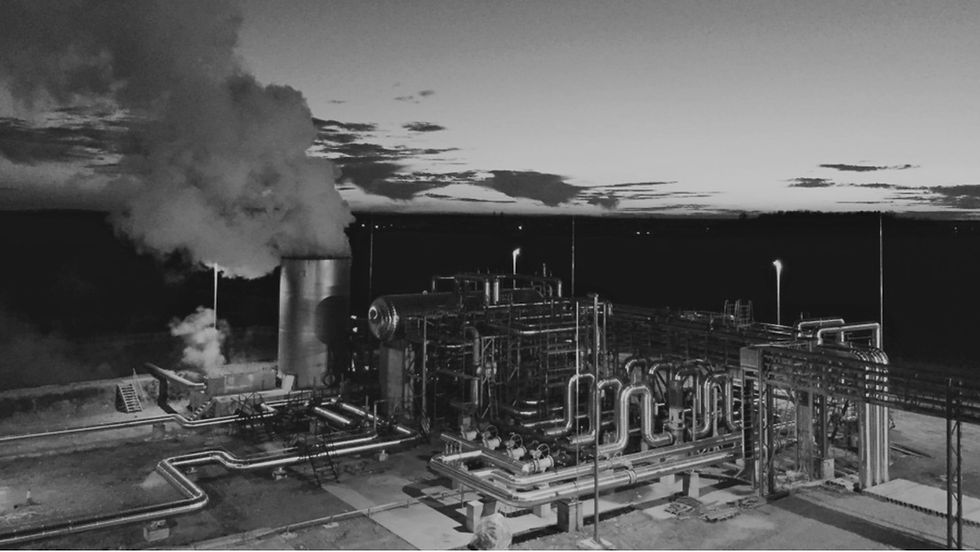


Pioneering Geothermal Solutions
About Providence Power
At Providence Power, we’re at the forefront of EGS development, blending geothermal and subsurface expertise with decades of experience in developing and financing complex energy infrastructure projects to deliver scalable, low-carbon energy solutions.
We are currently developing an EGS project in South Texas—leveraging the region’s vast untapped heat resources — and we have a robust global pipeline of opportunities in high potential regions. Our approach emphasizes efficient drilling, reservoir optimization, and partnerships that drive sustainable returns, positioning us to lead the transition to baseload renewables.
Join the EGS Revolution Today
Primary applications include:
Greenfield Projects:
Develop and build new integrated power plants that can supply power to utilities or directly to industrial users.
Brownfield Projects:
Expand capacity of underperforming conventional geothermal plants or repower coal plants.
Co-location for AI and HPC Data Centers:
Provide combined power and cooling solutions including potential for large scale co-located, behind-the-meter projects.
Why Geothermal?

Global electricity demand is expected to rise from 25,000 TWh in 2023 to >64,000 TWh in 2050 representing a multi-trillion-dollar addressable market, however, AI data centers, EVs, and manufacturing power needs will outstrip supply of fossil-fuel power, traditional renewables and storage.
Enhanced Geothermal Systems (EGS) is a next generation geothermal approach that can generate 24/7, emission-free energy from heat trapped in subsurface rock formations. EGS leverages proven unconventional oil & gas drilling, well completion and reservoir management techniques to create an engineered, sustainable heat reservoir. EGS avoids the resource risk and scalability issues of conventional geothermal, minimizes surface land use, and is accessible globally.
The International Energy Agency (IEA) estimates that global geothermal resources at depths of less than 8km could provide 600TW of generation capacity with an estimated life of 25 years.
How EGS Works
Drilling
Stimulation/Fracturing
Generation



Directional drilling up to 7 km (~23,000 ft)
Horizontal laterals of 8000 - 10000 feet
Triplet approach of one stimulation and two production walls
Water is injected into these formations, where controlled hydraulic stimulation creates fracture networks, creating/enhancing permeability in the rock formation to facilitate heat exchange
Target rock formations at temperatures from 150 - 300C
Heat released from the rock formation heats the water as it circulates in the geothermal reservoir
Fractures in the rock allow heated water or steam to connect to production wells
Heated water/steam rises to the surface, driving turbines connected to generators to produce reliable baseload electricity with capacity factors exceeding 90%
Water can then be reinjected into the reservoir in a loop system
Why EGS - a vast, untapped resource

5,157 GW
Electrical capacity across the U.S.
90 GW
Electrical capacity in U.S. by 2050
10%
U.S. capacity from Great Basin alone
82,945 GW
U.S. capacity from Great Basin alone
4,600 GW
Global capacity available at ≤€ 50/MWh
Impact
Enough to power 450% of current U.S. utility-scale generation (vs. 1,140 GW in 2021) - a "50-state solution for energy independence.
Could supply 12% of U.S. electricity demand, expanding geothermal's role 20-fold from today.
Nevada & surrounding states hold enough heat (down to 6 km) for one-tenth of national needs with tech advances.
Vast baseload capacity exceeding conventional hydrothermal, powering millions of homes year-round.
Sustainable potential of 256 GW by 2050 - scalable worldwide for economic, low-cost clean energy.
Source
U.S. DOE & CRS Report
NREL Enhanced Geothermal Shot & DOE GeoVision
USGS Assessment
Scientific Reports Techno-Economic Study
ScienceDirect Global EGS Estimate
Powering 65+ Million Homes: EGS could energize over 65 million American homes and businesses - limitless, domestic heat from beneath our feet.
Why EGS Outshines Wind & Solar: Reliable, Efficient, and Grid-Smart
Wind and solar are vital renewables, but their intermittency demands costly storage and backups.
EGS? It's the weather-proof baseload powerhouse - running at up to 95% capacity factor (vs. 25-35% for wind and solar).
Here's how EGS stacks up:
Advantage
EGS
Wind
Solar
Why it Matters
Reliability
24/7 baseload, unaffected by weather
Intermittent (wind-dependent)
Daytime only (sun-dependent)
EGS provides constant power, complementing variable renewables for stable grids - no blackouts from calm nights or clouds.
Land Use
Minimal footprint (~404 sq mi/GWh)
High (~1,335 sq mi/GWh)
Highest (~2,430 sq/mi/GWh)
EGS fits anywhere - urban or rural - without sprawling farms disrupting ecosystems or views.
Efficiency & Stability
High thermal efficiency, low LCOE long-term
Variable output, needs storage
Variable, needs storage
EGS is more efficient and stable, with lower operational costs over time - ideal for net value vs. standalone wind/solar.
Environmental Impact
Near-zero emissions, small site disruption
Bird/bat risks, visual noise
Manufacturing pollution, end-of-life waste
EGS is cleaner overall, with less land occupation and no wildlife hazards - a true low-impact renewable
Scalability
Global potential, large scale (>500MW projects feasible), leverages oil/gas tech talent and supply chains
Location-limited (windy sites)
Sunny sites only
EGS unlocks heat everywhere, boosting grid flexibility - hybrid EGS + wind/solar cuts climate impact further.
Technological Advancements
The company is developing proprietary technology that will enable access and operation in significantly higher heat resources, thereby substantially increasing energy yield per well drilled. Providence has a growing pipeline of EGS projects globally.
Global EGS Potential Breakdown (1-7 km, Land-Based)
Below is an estimated breakdown of the global Enhanced Geothermal Systems (EGS) potential at depths of 1-7km, focusing on economically viable capacity (~4,600 GWe total) and theoretical maximums (>200,000 GWe). These figures are derived from USGS, IRENA, UNEP, and regional geothermal assessments (2022-2023), adjusted for land-based resources.
